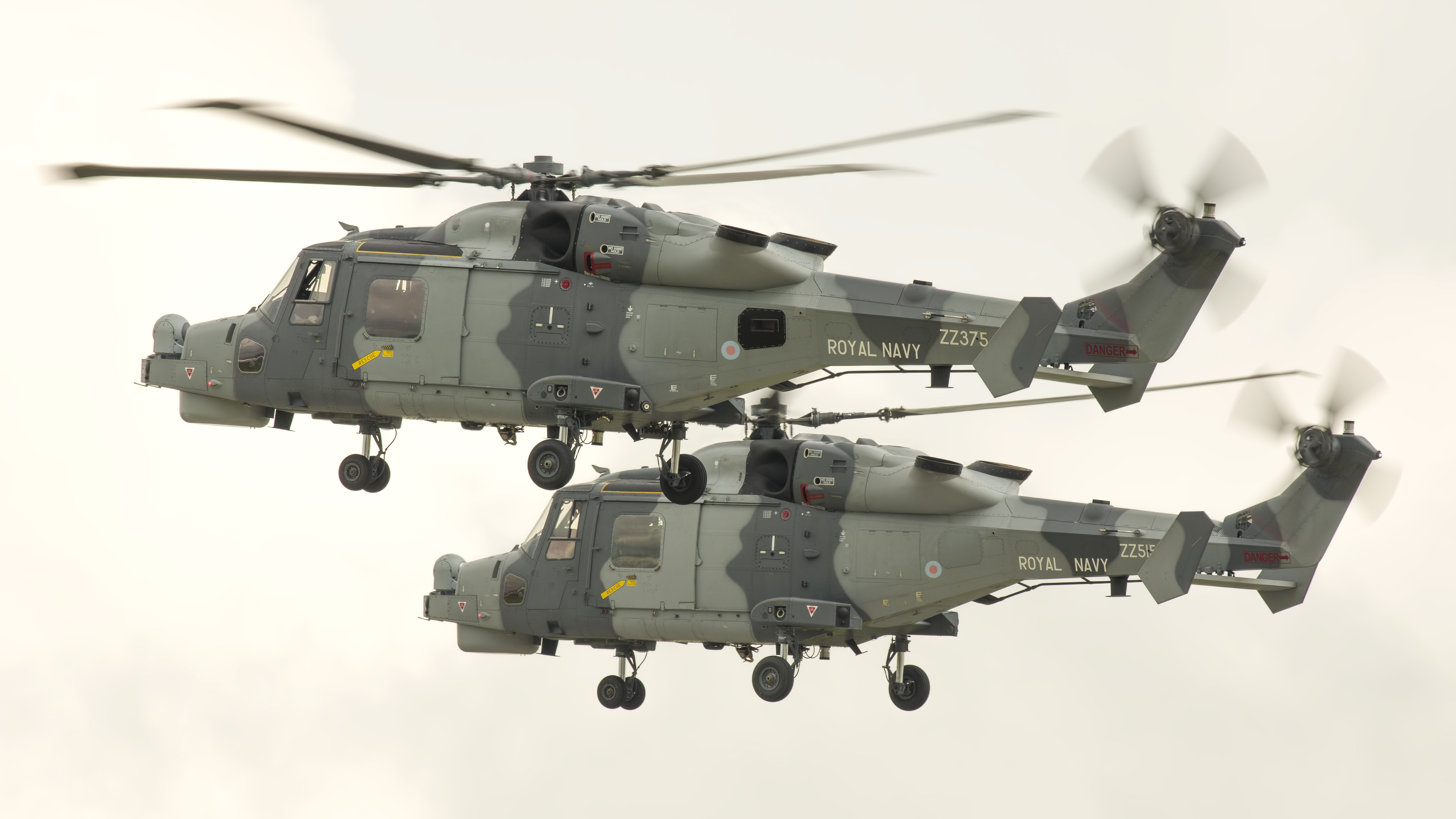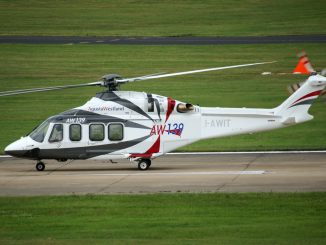
The AgustaWestland AW159 Wildcat is the latest twin-engine multi-role, maritime and utility aircraft developed from the extremely successful Westland Lynx family.
The UK is to initially receive 34 Wildcats for the British Army and 28 for the Royal Navy. The Army variant is to enter operational service in 2014, with the RN variant following in 2015.
In December 2011 it was reported that four more Wildcats were being ordered for use in the special forces. These are to be joined by four from the current fleet on order, for a total of eight Wildcat Light Assault Helicopters.
Developing nation: United Kingdom.
Manufacturer/designer: AgustaWestland.
Production Lines: Yeovilton.
Type aircraft: Utility, SAR and Anti Submarine Warfare.
First flight: 12 November 2009..
First delivery: 2014.
Developed from: Westland Lynx
The AW159 is equipped with a comprehensive and highly capable integrated avionics suite that enables advanced navigation, communication, theatre integration and stores management functionality. The fully integrated digital cockpit provides an increased mission capability with a reduction of aircrew workload. The helicopter is equipped with a sophisticated suite of mission sensors, including, Active Electronic Scanned Array (AESA) radar; Active Dipping Sonar (ADS) for the naval variant; Electro Optical Device (EOD) for imaging and target designation; Electronic Support Measures (ESM) and an integrated Defence Aids Suite (DAS). The AW159 is a purpose built military aircraft with a fully marinised airframe that has been designed for all environments, including the harsh sea conditions associated with ship borne operations, and equipped with modern systems designed to provide low crew workload, reliability and ease of maintenance. With its unmatched agility and ability to rapidly change roles, coupled with the latest avionics, communications and mission suite, the network enabled AW159 provides the user with an advanced day/night all weather capability. The AW159 is a significant force multiplier.
General characteristics
- Crew: 2 pilots
- Capacity: 7 passengers, including door gunner
- Length: 15.24 m (50 ft 0 in)
- Height: 3.73 m (12 ft 3 in)
- Max takeoff weight: 6,000 kg (13,228 lb)
- Powerplant: 2 × LHTEC CTS800-4N turboshaft, 1,015 kW (1,361 hp) each
- Main rotor diameter: 12.8 m (42 ft 0 in)
- Main rotor area: 128.7 m2 (1,385 sq ft)
Performance
- Maximum speed: 291 km/h (181 mph; 157 kn)
- Range: 777 km (483 mi; 420 nmi)
- Ferry range: 963 km (598 mi; 520 nmi)
- Endurance: 1 hr 30 min (4 hr 30 min with auxiliary fuel)
Armament
- Forward firing CRV7 rockets and machine guns,
- Pintle mounted machine gun, e.g. FN MAG (Army) or Browning M2 (Navy).
Air-to-Surface Missile systems:
- Future Anti-Surface Guided Weapon (Light). Thales Lightweight Multirole Missile (LMM)
- Future Anti-Surface Guided Weapon (Heavy). Physically similar replacement for the Sea Skua with twice the range and a larger 40kg warhead. Combined design with France’s Anti-Navire Léger. To disable or destroy vessels up to 1000 tonne, up to eight could be carried by the Lynx Wildcat. Entry into service about 2015.
- Sting Ray torpedo and depth charges
All pictures courtesy of Zijde Aviation Photo and Publishing, Rob Vogelaar










